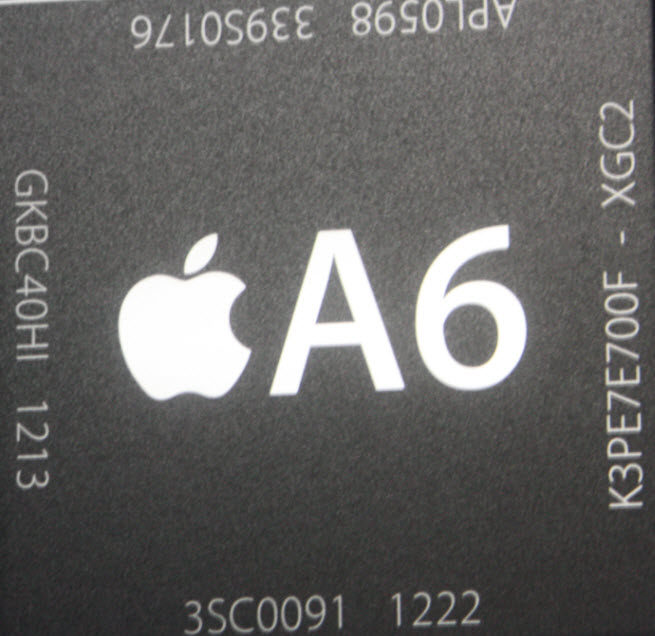The A6 processor in the new iPhone 5 is the latest in a series of powerful custom microprocessors that Apple has designed on its own.
A close analysis of the chip by Anandtech, the geek site run by Anand Lal Shimpi, reveals that Apple’s new system-on-a-chip (SOC) design does not use one of ARM’s newest cores, the ARM Cortex 15 or the currently available ARM Cortex 9. ARM designs a processor architecture and then licenses it out to chip makers who take their own custom features and build complete semiconductor chips. Apple is a licensee of ARM, and the easy thing for Apple to do would be to adopt one of ARM’s cores.
But the A6, which has twice the processing power and graphics capability of the predecessor A5 chip, is more custom than that. Phil Schiller, senior vice president of worldwide marketing at Apple, announced the chip with few details at the Apple event for the iPhone 5. The Apple A5 chip, which is manufactured by Samsung and designed by Apple, uses the ARM Cortex A9 core. But instead of adopting ARM’s newest core, Apple created its own design based on the ARMv7 architecture. The iPhone 5 will ship running iOS 6.0, the new version of the operating system.
Developer code shipped this week includes support for the new architecture, dubbed the ARMv7s. Apple has the necessary licenses from ARM to create chips based on specific cores as well as permission to create its own set of instructions for ARM chips. By going more custom, Apple can create a chip that has a low cost and performs only the functions that Apple wants it to do. There is less waste in such an effort. But it’s a lot more expensive because Apple has to have more engineers and test the functions of the chip on its own. Apple said that it will have longer battery life and twice the central processing unit (CPU) performance. To accomplish that, Apple has to move to a more advanced manufacturing process, which helps shrink circuits. A smaller circuit is faster because electrical signals have a shorter distance to cover. Schiller said the A6 is 22 percent smaller than the A5, which is built with a 45-nanometer manufacturing process.
But simply moving to more miniaturization in the manufacturing process (shifting to 32 nanometer circuitry) is not enough to hit the gains that Apple reported, Lal Shimpi said. Rather, Apple’s engineers had to design the circuitry to be more power and performance efficient. That’s a major effort. To figure out the exact performance and design efficiency, Lal Shimpi needs more details that aren’t available yet. The chip has its own on-board processor, but it also has a graphics processing unit, the PowerVR SGX 543 MP3, from Imagination Technologies.


